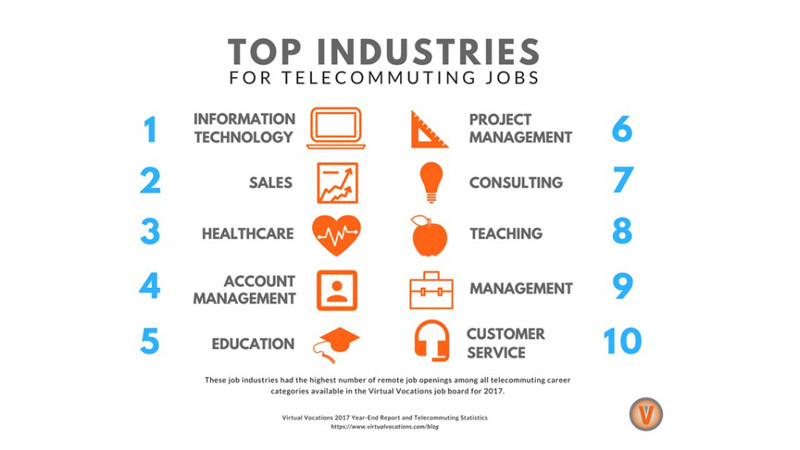Supporting Anxious Employees: A Manager's Guide


The latest figures estimate that around 20-25% of US workers telecommute at least part of the time. It is a number we can expect to grow given the rising demand by professionals for the ability to work outside a traditional office or from home at least part-time. In one survey, more than one-third of the respondents said they would change jobs to work remotely at least some of the time. Today, a total of 170 companies operate 100% virtually, again a number we can expect to climb as technology continues to evolve and supply even more tools that enable people to function away from the office. However, when we talk about virtual workers, we must also take into account the number of virtual teams as globalization means companies have offices and employees all over the world. Not surprisingly, the IT industry has the highest percentage of remote workers.

Source: Small Business Trends
First, let’s look at what an employer has to gain from hiring virtual workers. TELUS, a Canadian national telecommunications company, which says that 70% of its workforce spends some portion of their week working virtually, reports the following:
For the virtual worker, the pluses include increased quality of life and financial savings. Given the benefits to organizations, and for employees, it is more likely that working virtually will expand, and leaders need to understand challenges associated with this.
Working remotely can have its challenges for engagement and distraction. In an article in Fast Company, the authors list several challenges those new to working remotely can face – including getting distracted too easily, not setting boundaries and not having the right setup. For employers, there is also the issue of maintaining accountability.
As noted in a Hubstaff blog post, 7 Deadly Disadvantages of Working from Home and How to Counter Them, “It becomes hard to monitor how they work, or their deliverables. The degree of procrastination is something that can spiral out of control. Depending on the type of role you hire for; it is important to know how you are going to monitor their status.”
Google recently completed a two-year study on remote work. Given that two in five workgroups include Googlers in more than one location, they have at their hands the ideal workforce upon which to perform research into virtual teams.
Here are their top three tips that Google now uses to make dispersed teams feel united.
As part of the Skillsoft Leadership Development Program (SLDP), we offer a channel of curated assets on leading virtually that can be accessed anytime, anywhere there is an internet connection. Also, our channels on cross-cultural leadership and embracing diversity provide additional information for those who have international team members.
We also feature Tamara Erickson, who is an award-winning author, expert on the changing workforce and an adjunct professor of organizational behavior at the London School of Business. She believes that “As a leader, you have to take responsibility of making sure people have the time and opportunity to get to know each other. So build that into the early process.”
The SLDP offers a selection of video-based courses, books, audiobooks, and also practice materials for leaders to guide conversations with their remote workers. Find out which traditional principles still apply and which new policies will make a difference in team effectiveness—no matter how geographically dispersed team members are.
Benny Ramos is a Solution Principal for Business and Leadership at Skillsoft.
We will email when we make a new post in your interest area.

